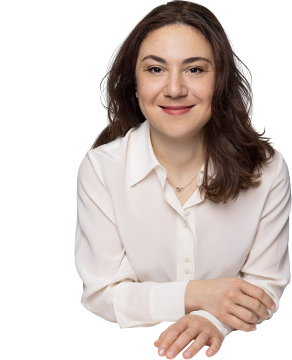Safety before punctuality: Bird strikes constitute extraordinary circumstances
On 4 May 2017, the Court of Justice of the European Union (the CJEU) handed down it's ruling in the Pešková-case – the first bird strike case decided at the EU level. The court ruling is good news for air carriers: Bird strikes constitute extraordinary circumstances under Regulation 261 / 2004. And this also applies in cases of sequential flights where a bird strike on one flight causes a delay of the subsequent flights. Air carriers must however still show that they have taken reasonable measures to counter possible delays.
The Facts of the Pešková Case
The case regarded a claim for compensation due to the delay of a flight in August 2013 from Burgas, Bulgaria to Ostrava, the Czech Republic. The aircraft, which was operated by Travel Service a.s., was scheduled to fly the following route: Prague – Burgas – Brno – Burgas – Ostrava.
On the first flight (from Prague to Burgas), a valve failed and had to be repaired. This repair took 1 hour and 45 minutes. On the second flight (from Burgas to Brno), the bird strike occurred thereby causing further delay. Thus, there were two events that jointly caused the delay.
After the bird strike, a technical team examined the aircraft thoroughly, but no damage was found. However, at the request of the owner of the aircraft, the air carrier had their own technician from the Czech Republic fly in to have a second opinion. He did not find any damage to the aircraft either. The aircraft then continued onwards from Brno to Burgas and from Burgas to Ostrava; it was on this fourth flight that Ms. Pešková and her travel companion flew.
Due to the accumulated delay following the events on the first two flights, the last flight was in total delayed by 5 hours and 20 minutes.
The passengers then filed a claim of 250 EUR each against the air carrier as compensation for the delay pursuant to Regulation 261/2004. The claim was filed with Prague’s 6th District Court who found in favour of the passengers. However, the ruling was appealed and after having been sent back and forth in the Czech legal system, it ended up again with Prague’s 6th District Court which then submitted a number of questions to the CJEU.
The case was decided by the third chamber of the CJEU, and the court was chaired by the president of the third chamber, Mr. Lars Bay Larsen, a former judge of the Danish Supreme Court.
Bird Strikes Constitute “Extraordinary Circumstances”
In order to decide whether a given event is an extraordinary circumstance, the court applied a three-stage test and thus considered whether a bird strike may be said to be an event, which is:
- Not intrinsically linked to the operating system of the aircraft; and
- by its nature or origin not inherent in the normal exercise of the activity of the air carrier; and
- outside its actual control
The answer to these three questions was affirmative, and on this basis, the court stated that a bird strike qualifies as an extraordinary circumstance.
Moreover, the court stated that it is immaterial whether a bird strike has actually damaged the aircraft. The court specifically stated that when applying regulation 261/2004, it is important that air carriers are not encouraged to refrain from taking all relevant safety measures by prioritizing the maintaining and punctuality of their flights over the objective of safety. Safety comes first.
Air Carriers Must Take Reasonable Measures
The concept of “reasonable measures” is vague, but the premises of the ruling clarify the concept a little bit.
In order to avoid a claim, the air carrier must prove that the extraordinary circumstance could not have been avoided even if all reasonable measures had been taken. The measures that must be taken (besides from qualifying as “reasonable”) are such measures that are likely to reduce or even prevent the risk of the extraordinary event.
Which “Measures” are Relevant?
Firstly, the court stated that only those measures which can actually be the air carrier’s responsibility must be taken into account. The court further stated that measures which are the responsibility of other parties, such as, airport managers or traffic controllers, should be excluded. It is not entirely clear how far this reasoning goes; what would e.g. apply in relation to a measure that sometimes - but not always - is subcontracted by the air carrier to a third party?
The line drawn by the court is not clear here; the key question as to whether a certain measure should be considered taken or not is: Whether the air carrier at the technical and administrative levels under the given circumstances is actually in a position to take certain measures - directly or indirectly.
“Reasonable” – What Does That Mean In Practice?
Secondly, the court also stated that in order to decide whether a certain measure is “reasonable”, one must consider whether the measure in question would require the air carrier to make intolerable sacrifices in the light of the capacities of its undertaking.
This criterion raises some questions which are difficult to answer from a legal point of view. E.g. how little profit – or how big a loss – should an air carrier be expected to accept, before the financial sacrifice may be considered to be “intolerable”?
Different Air Carriers, Different Requirements?
Both in relation to defining which measures are relevant and in relation to defining when a measure may reasonably be required to be taken, the court seems to apply a subjective view; i.e. a different “level” of measures may be expected from different air carriers, depending inter alia on the individual air carrier’s financial capabilities. How this should actually be applied is up to the national courts of each EU member state to decide.
The court calls this concept of reasonable measures “an individualized and flexible concept” - an expression that looks nice on paper, but which will probably as an unfortunate side-effect lead to a new wave of litigation from claims farmers, trying to test the boundaries of which measures that may reasonably be expected from air carriers.
For air carriers, this means that careful efforts should be made in order to be able to actually lift the burden of proof that it has taken all relevant reasonable measures – not an easy task, but on the other hand not an impossible task either. And if a relevant measure is not taken, air carriers must show that the measure in question would have incurred intolerable financial sacrifices.
Several Causes of Delay: Extraordinary Events Should Be Deducted
As mentioned initially, there were two subsequent causes of delay: One due to a technical fault and another due to a bird strike. Only the bird strike was extraordinary.
The court stated that in such situations the delay caused by the first event must be deducted from the total length of the delay at arrival in order to assess whether the delay is long enough for the passenger to be entitled to compensation, cf. Regulation 261 / 2004.
Extraordinary Events On Previous Legs of the Same Flight Also Count
Besides from clarifying that bird strikes are extraordinary, the decision also shows that an event on a flight which forms part of a series of sequential flights may qualify as an extraordinary event in relation to delays of the subsequent flights. This has been a matter of dispute in several cases, but the premises of the Pešková-case have now clarified this.
What Now?
The Pešková-ruling should mean an end to compensation claims in cases concerning delay of flights due to bird strikes. Such claims should be rejected, provided that the air carrier can pass “the reasonable measures test”.
The ruling also clarifies that where the route of an aircraft is divided into several flights, an extraordinary event on a prior flight shall be taken into account, when calculating the length of the delay of the subsequent flight(s).
We will of course keep our aviation clients informed about the further legal development of aviation law. But right now, we would just like to wish all air carriers our sincere congratulations with this important and long-awaited court ruling.
The Facts of the Pešková Case
The case regarded a claim for compensation due to the delay of a flight in August 2013 from Burgas, Bulgaria to Ostrava, the Czech Republic. The aircraft, which was operated by Travel Service a.s., was scheduled to fly the following route: Prague – Burgas – Brno – Burgas – Ostrava.
On the first flight (from Prague to Burgas), a valve failed and had to be repaired. This repair took 1 hour and 45 minutes. On the second flight (from Burgas to Brno), the bird strike occurred thereby causing further delay. Thus, there were two events that jointly caused the delay.
After the bird strike, a technical team examined the aircraft thoroughly, but no damage was found. However, at the request of the owner of the aircraft, the air carrier had their own technician from the Czech Republic fly in to have a second opinion. He did not find any damage to the aircraft either. The aircraft then continued onwards from Brno to Burgas and from Burgas to Ostrava; it was on this fourth flight that Ms. Pešková and her travel companion flew.
Due to the accumulated delay following the events on the first two flights, the last flight was in total delayed by 5 hours and 20 minutes.
The passengers then filed a claim of 250 EUR each against the air carrier as compensation for the delay pursuant to Regulation 261/2004. The claim was filed with Prague’s 6th District Court who found in favour of the passengers. However, the ruling was appealed and after having been sent back and forth in the Czech legal system, it ended up again with Prague’s 6th District Court which then submitted a number of questions to the CJEU.
The case was decided by the third chamber of the CJEU, and the court was chaired by the president of the third chamber, Mr. Lars Bay Larsen, a former judge of the Danish Supreme Court.
Bird Strikes Constitute “Extraordinary Circumstances”
In order to decide whether a given event is an extraordinary circumstance, the court applied a three-stage test and thus considered whether a bird strike may be said to be an event, which is:
- Not intrinsically linked to the operating system of the aircraft; and
- by its nature or origin not inherent in the normal exercise of the activity of the air carrier; and
- outside its actual control
The answer to these three questions was affirmative, and on this basis, the court stated that a bird strike qualifies as an extraordinary circumstance.
Moreover, the court stated that it is immaterial whether a bird strike has actually damaged the aircraft. The court specifically stated that when applying regulation 261/2004, it is important that air carriers are not encouraged to refrain from taking all relevant safety measures by prioritizing the maintaining and punctuality of their flights over the objective of safety. Safety comes first.
Air Carriers Must Take Reasonable Measures
The concept of “reasonable measures” is vague, but the premises of the ruling clarify the concept a little bit.
In order to avoid a claim, the air carrier must prove that the extraordinary circumstance could not have been avoided even if all reasonable measures had been taken. The measures that must be taken (besides from qualifying as “reasonable”) are such measures that are likely to reduce or even prevent the risk of the extraordinary event.
Which “Measures” are Relevant?
Firstly, the court stated that only those measures which can actually be the air carrier’s responsibility must be taken into account. The court further stated that measures which are the responsibility of other parties, such as, airport managers or traffic controllers, should be excluded. It is not entirely clear how far this reasoning goes; what would e.g. apply in relation to a measure that sometimes - but not always - is subcontracted by the air carrier to a third party?
The line drawn by the court is not clear here; the key question as to whether a certain measure should be considered taken or not is: Whether the air carrier at the technical and administrative levels under the given circumstances is actually in a position to take certain measures - directly or indirectly.
“Reasonable” – What Does That Mean In Practice?
Secondly, the court also stated that in order to decide whether a certain measure is “reasonable”, one must consider whether the measure in question would require the air carrier to make intolerable sacrifices in the light of the capacities of its undertaking.
This criterion raises some questions which are difficult to answer from a legal point of view. E.g. how little profit – or how big a loss – should an air carrier be expected to accept, before the financial sacrifice may be considered to be “intolerable”?
Different Air Carriers, Different Requirements?
Both in relation to defining which measures are relevant and in relation to defining when a measure may reasonably be required to be taken, the court seems to apply a subjective view; i.e. a different “level” of measures may be expected from different air carriers, depending inter alia on the individual air carrier’s financial capabilities. How this should actually be applied is up to the national courts of each EU member state to decide.
The court calls this concept of reasonable measures “an individualized and flexible concept” - an expression that looks nice on paper, but which will probably as an unfortunate side-effect lead to a new wave of litigation from claims farmers, trying to test the boundaries of which measures that may reasonably be expected from air carriers.
For air carriers, this means that careful efforts should be made in order to be able to actually lift the burden of proof that it has taken all relevant reasonable measures – not an easy task, but on the other hand not an impossible task either. And if a relevant measure is not taken, air carriers must show that the measure in question would have incurred intolerable financial sacrifices.
Several Causes of Delay: Extraordinary Events Should Be Deducted
As mentioned initially, there were two subsequent causes of delay: One due to a technical fault and another due to a bird strike. Only the bird strike was extraordinary.
The court stated that in such situations the delay caused by the first event must be deducted from the total length of the delay at arrival in order to assess whether the delay is long enough for the passenger to be entitled to compensation, cf. Regulation 261 / 2004.
Extraordinary Events On Previous Legs of the Same Flight Also Count
Besides from clarifying that bird strikes are extraordinary, the decision also shows that an event on a flight which forms part of a series of sequential flights may qualify as an extraordinary event in relation to delays of the subsequent flights. This has been a matter of dispute in several cases, but the premises of the Pešková-case have now clarified this.
What Now?
The Pešková-ruling should mean an end to compensation claims in cases concerning delay of flights due to bird strikes. Such claims should be rejected, provided that the air carrier can pass “the reasonable measures test”.
The ruling also clarifies that where the route of an aircraft is divided into several flights, an extraordinary event on a prior flight shall be taken into account, when calculating the length of the delay of the subsequent flight(s).
We will of course keep our aviation clients informed about the further legal development of aviation law. But right now, we would just like to wish all air carriers our sincere congratulations with this important and long-awaited court ruling.
Receive our newsletter

Aage
Krogh
PartnerSimilar
The team

Aage
Krogh
Partner
Adam
Harding Ryyd Lange
Junior legal advisor
Albert
Berg Giese
Legal assistant
Albert
Vestergaard Mogensen
Junior legal advisor
Alberte
Uldall Vind Nielsen
Junior legal assistant
Amalie
Bjerre Hilmand
Senior legal advisor
Andrea
Liva Lyngbye-Ottesen
Legal assistant
Andreas
Odgaard Christensen
Junior legal advisor
Anna
Bonander
Legal advisor
Anna
Ferguson Bille-Biggart
Junior legal advisor
Anne
Voigt Kjær
Senior legal assistant
Ashley
Kristine Morton
Senior legal advisor
Asla
Tui Casey Belusa
Legal assistant
Aurora
Maria Thunes Truyen
Associate
Bertram
Geisler Jensen
Junior legal assistant
Bror
Johan Kristensen
Senior legal advisor
Caroline
Sofie Urup Malmstrøm
Junior legal advisor
Chris
Anders Nielsen
Senior legal advisor
Cille
Fahnø
Legal advisor
Clara
Caballero Stephensen
Junior legal advisor
Daniela
Zaragoza-Schultz
Legal assistant
Ea
Tingkær Hesselfeldt
Legal assistant
Ellen
Hyldgaard Rasmussen
Junior legal assistant
Ellen
Priess-Hansen
Junior legal advisor
Elvira
Feline Basse Schougaard
Senior legal advisor
Emilie
Mehl Bagger
Legal assistant
Emily
Mortensen
Junior legal advisor
Feline
Honoré Jepsen
Senior legal assistant
Frederikke
Østerlund Haarder
Senior legal assistant
Freja
Pedersen
Legal assistant
Frida
Assarson
Associate
Gustav
Vestergaard
Senior legal assistant
Holger
Koch-Klarskov
Senior legal advisor
Ian
Englev Jensen
Senior legal assistant
Ida
Marie Skovgaard Rubæk
Senior legal manager
Isabella
Fjording
Legal assistant
Jessica
Wenjin Zhu
Junior legal assistant
Johanne
Alberte Liljeborg
Junior legal advisor
Julia
Wolfe
Legal advisor
Kaisa
Maria Falkenberg Lending
Legal advisor
Kaisa
Nova Ordell Guldbrand Thygaard
Senior legal advisor
Karoline
Halfdan Petersen
Senior legal assistant
Kateryna
Buriak
Legal advisor
Luna
Bennesen
Legal assistant
Marie
Møller Christensen
Senior legal advisor
Mathias
Bech Linaa
Senior legal advisor
Mathias
Rex Brohus
Senior legal assistant
Mathilde
Bjørn Bjerring
Legal assistant
Mathilde
Stenderup
Legal assistant
Maya
Cecillia Jørgensen
Senior legal advisor
Merle
Frisendahl Fog
Legal assistant
Nadine
Latifa Navasse Balland
Junior legal assistant
Nourchaine
Sellami
Legal advisor
Selma
Agopian
Senior Associate, EU-advokat
Silja
Brünnich Fogh von Deden
Senior legal assistant
Simon
Saaby-Lamer
Legal assistant
Smilla
Østergaard Vintov
Junior legal assistant
Thilde
Zwicki Meulengracht
Senior legal assistant
Veronica
Steen Ravn Forsberg
Junior legal assistant
Victoria
Mai Gregaard Handberg
Senior legal advisor